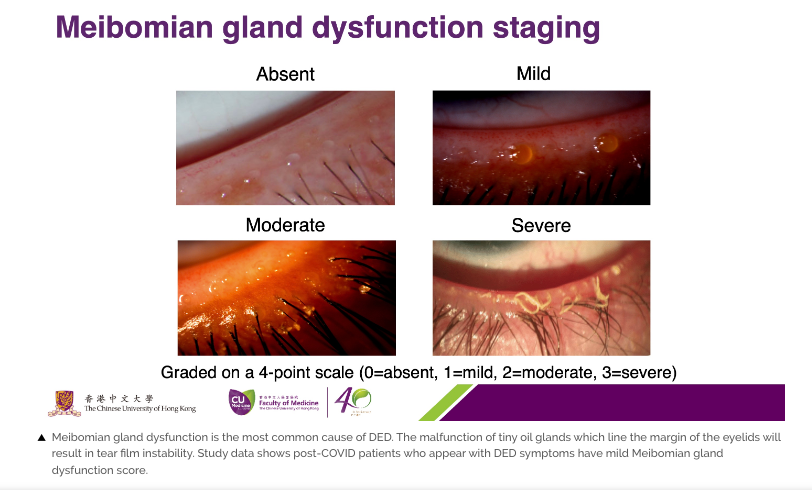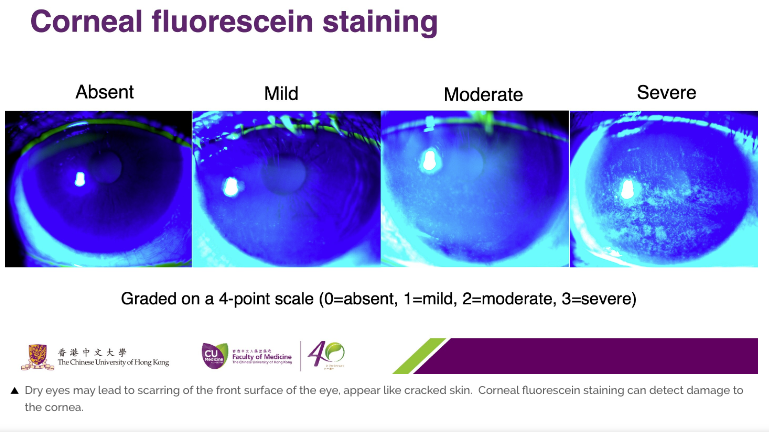Higher risk of dry eye disease linked to post-COVID-19 patients
Fully recovered COVID-19 patients have a higher prevalence for developing dry eye disease, researchers report.
COVID-19 patients may experience persistent symptoms of dry eye disease (DED) in the weeks and months following recovery, researchers have found.
In a study conducted by investigators from the Department of Ophthalmology and Visual Sciences of The Chinese University of Hong Kong’s Faculty of Medicine, 1 in 5 COVID-19 patients reported at least 1 recent-onset symptom of DED.1
The findings were recently published in Clinical and Experimental Ophthalmology, official journal of The Royal Australian and New Zealand College of Ophthalmologists.
The study analyzed 228 participants 1 to 3 months following their COVID-19 diagnosis, between February and December 2020, and 109 healthy,
non-COVID-19-diagnosed participants who were age-matched.
Courtesy of The Chinese University of Hong Kong’s (CUHK) Faculty of Medicine (CU Medicine).

Those who had any pre-existing ocular surface conditions, history of refractive surgery or ophthalmic surgery, ocular trauma, who had worn contact lenses with the past 3 months, or who were using eye medications of any kind, were excluded from the study, investigators reported.
In a questionnaire conducted, post-COVID-19 patients reported dry-eye-related ocular surface symptoms such as blurred vision (9%), itching, (6.1%), pain or burning (4.8%), tearing or discharge (3.9%), and redness (3.1%).1
All participants were given a comprehensive eye exam that included an evaluation for the most common cause of DED—meibomian gland dysfunction (MGD)—and corneal fluorescein staining, an indicator of DED.
Examination showed a higher prevalence of dry eye-related ocular surface presence in those who had had COVID-19 versus those who had not.
Courtesy of The Chinese University of Hong Kong’s (CUHK) Faculty of Medicine (CU Medicine).

Researchers reported that Participants who were previously treated for COVID-19 and received supplementary oxygen during hospitalization had a tear break-up time (TBUT) that was 1.6 seconds shorter than average (typically +10 seconds), researchers reported.
This implied a higher risk for DED when compared to post-COVID-19 participants who had not needed supplementary oxygen during hospitalization. Researchers reason this may be due to oxygen delivery causing gas flow to increase the evaporation of tear film.
“We found that every one-point reduction in Ct-value (inversely correlated with the viral load) from the respiratory specimen collected at hospital admission increased the risk of having any dry-eye-related ocular surface symptoms during the first month after recovery by 10%,” said Dr. Kelvin HN Wan, assistant professor in the Department of Ophthalmology and Visual Sciences of CU Medicine, and lead author of the study, in a news release. “This finding suggests the risk of tear film instability after recovery from COVID is associated with the severity of the acute infection.”
See more dry eye and COVID content
Reference
1. CUHK Medicine study shows a higher prevalence of dry eye disease among post-COVID-19 patients. The Chinese University of Hong Kong’s Faculty of Medicine. March 28, 2022. Accessed April 1, 2022. https://www.med.cuhk.edu.hk/press-releases/cuhk-medicine-study-shows-a-higher-prevalence-of-dry-eye-disease-among-post-covid-19-patients
Newsletter
Want more insights like this? Subscribe to Optometry Times and get clinical pearls and practice tips delivered straight to your inbox.